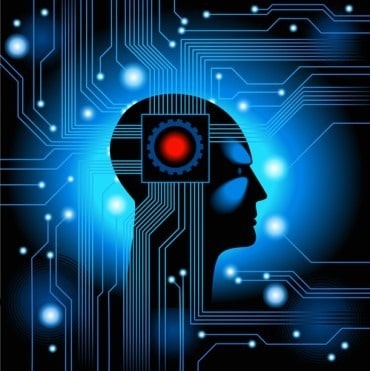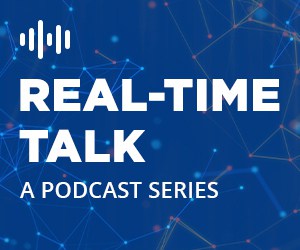
The “things” in the Internet of Things are getting smarter, with profound implications for organizations and the way people work and live.
A rapidly emerging force, artificial intelligence (AI), is taking computing at the edge to a whole new level, in which insights and analysis are provided on the spot, in real-time. With the IoT now front and center of business and technology strategies, the ability to analyze data streaming through edge computing devices and systems means a significant improvement in visibility and awareness of events across a network.
Already, the IoT is opening up new avenues of opportunity for businesses seeking to deliver enhanced levels of service. IoT capabilities have been achieved through data streaming from edge devices to core analytics systems. But things really begin to take off when edge devices themselves start becoming more intelligent.
The potential of AI at the edge is vast. A report from Tractica estimates that AI edge device shipments will increase from 161.4 million units in 2018 to 2.6 billion units worldwide annually by 2025. The top AI-enabled edge devices, in terms of unit volumes, will include mobile phones, smart speakers, PCs/tablets, head-mounted displays, automotive sensors, drones, consumer and enterprise robots, and security cameras. There will also be more AI incorporated into wearable health sensors, building or facility sensors, and networks of sensors planted around facilities or entire cities.
When the cloud and the IoT first developed across the enterprise landscape, the prevailing model was a centralized approach – “dumb” devices fed data to core analytical systems. Now, with intelligence moving to the edge, systems at the edge can quickly process data for inference and pattern-matching. Ultimately, smart IoT devices will support unsupervised machine learning, in which systems and sensors adapt their internal algorithms based on the latest data.
“The IoT is getting smarter,” report David Schatsky, Navya Kumar, Sourabh Bumb in a special report from Deloitte. “Machine learning, an AI technology, brings the ability to automatically identify patterns and detect anomalies in the data that smart sensors and devices generate—information such as temperature, pressure, humidity, air quality, vibration, and sound. The powerful combination of AI and IoT technology is helping companies avoid unplanned downtime, increase operating efficiency, enable new products and services, and enhance risk management.”
It isn’t just the software making AI-powered edge devices possible. From a hardware standpoint, today’s devices are increasingly capable of supporting the power and capacity requirements of AI algorithms. Sensors themselves are supporting significant memory and processing capacities within very tiny footprints, which is mitigating, if not eliminating, the need for transmitting data to central servers.
“Technical or energy constraints make it impossible to stream all that data to the cloud where the AI resides,” according to Rudi Cartuyvels, lead for Imec’s Smart Electronics & Applications R&D. “In addition, there are also use cases where patterns should be recognized instantaneously, such as with radars that need to detect people or vehicles in the path of a self-driving vehicle. There, the time delay of a round-trip to the cloud is simply prohibitive.”
Examples of applications benefitting from AI-charged edge computing include medical devices, manufacturing systems and vehicles. Medical devices, in particular, have an acute need for at-the-edge intelligence – critical data in the operating room, for example, has to be processed in a timely fashion in order to provide the right information for physicians or doctors to act upon.
Another potential area is machine vision, through cameras and visual analytics. For example, a camera can be positioned in a distribution facility to monitor and manage – in an instant – goods that are moving between trucks and pallets. With the combination of inexpensive and high-capacity hardware supporting intelligent software, organizations have only begun to explore the possibilities for achieving highly efficient operations and superior customer satisfaction.
The advantages of AI-enhanced decision-making at the edge include the following:
- Edge-based AI is highly responsive and closer to real-time than the typical centralized IoT model deployed to date. Insights are immediately delivered and processed, most likely within the same hardware or devices.
- Edge-based AI ensures greater security. Sending data back and forth with Internet-connected devices subjects data to tampering and exposure even without anyone being aware. Processing at the edge minimizes this risk, with an additional plus: Edge-based AI-powered devices can include enhanced security features.
- Edge-based AI is highly flexible. Smart devices support the development of industry-specific or location-specific requirements, from building energy management to medical monitoring.
- Edge-based AI doesn’t require a PhD to operate. Since they can be self-contained, AI-based edge devices don’t require data scientists or AI developers to maintain. Required insights are either automatically delivered where they are needed, or visible on the spot through highly graphical interfaces or dashboards.
- Edge-based AI provides for superior customer experiences. By enabling responsiveness through location-aware services, or rerouting travel plans in the event of delays, AI helps companies build trust and rapport with their customers.
As we move forward into the highly connected digital economy, inevitably, intelligence will move to the edge. The powerful combination of AI and the IoT opens up new vistas for organizations to truly sense and respond to events and opportunities around them.






